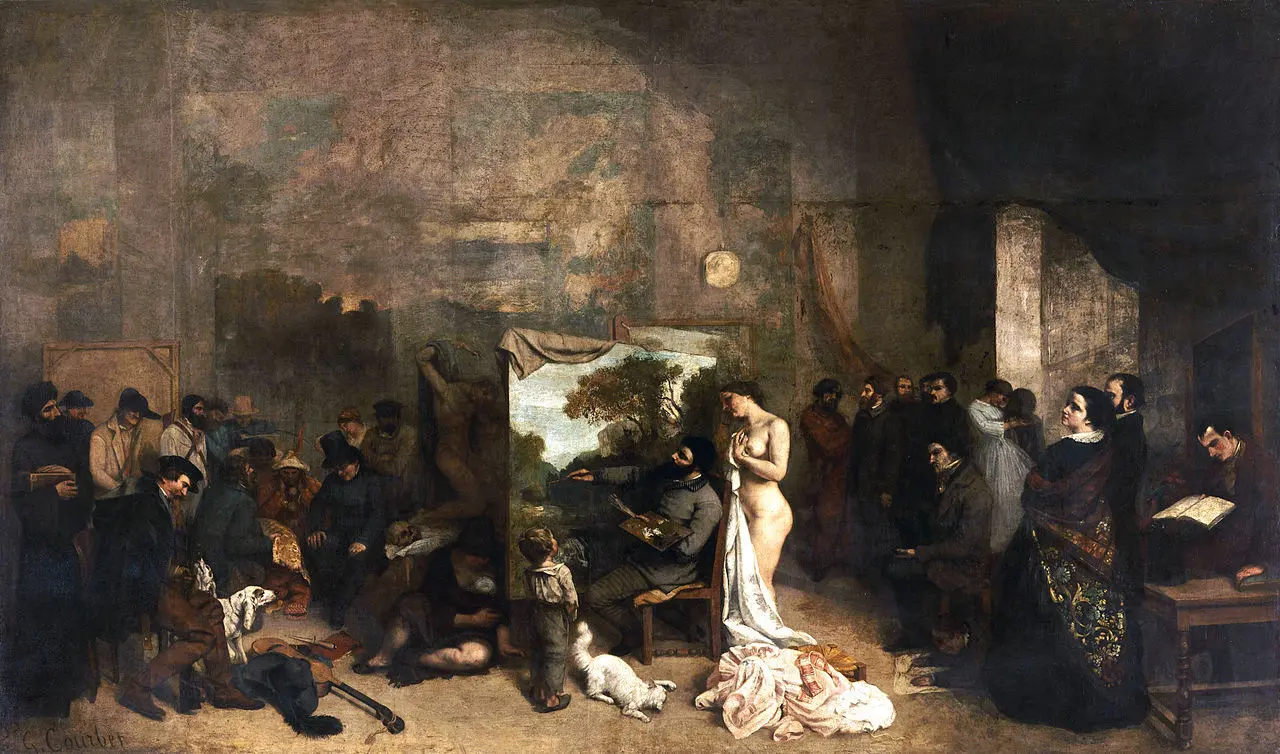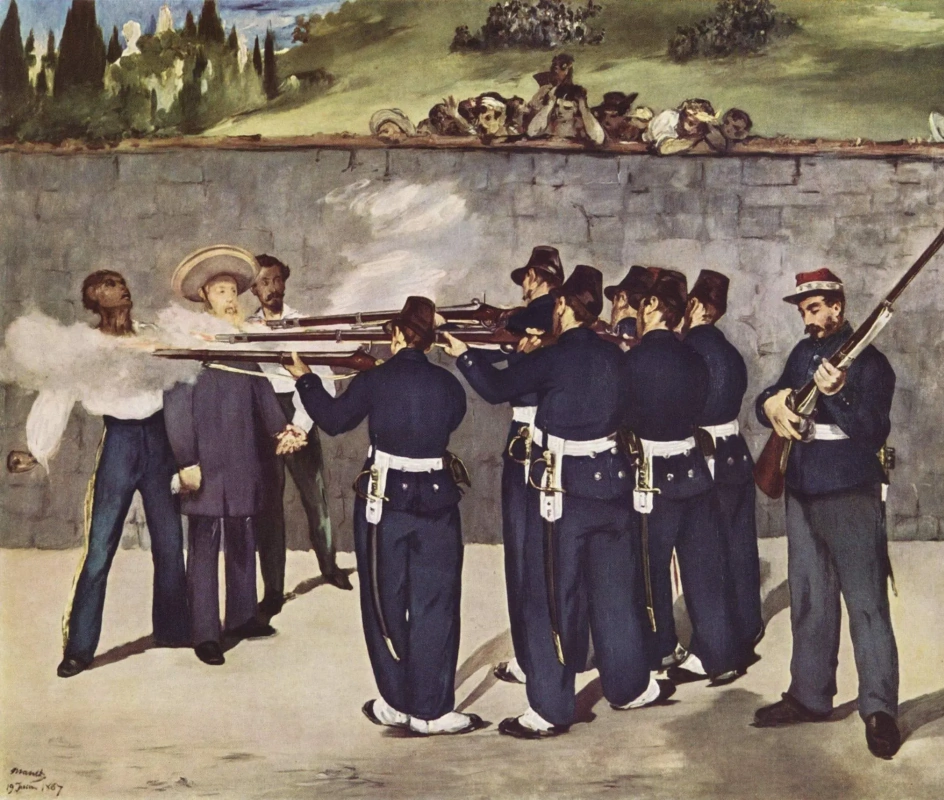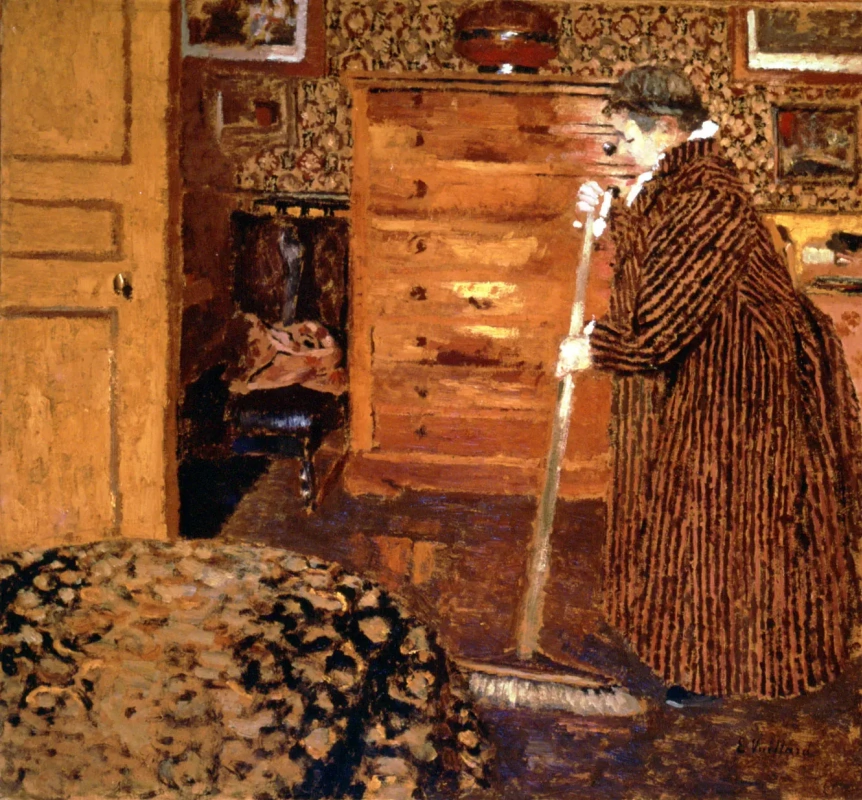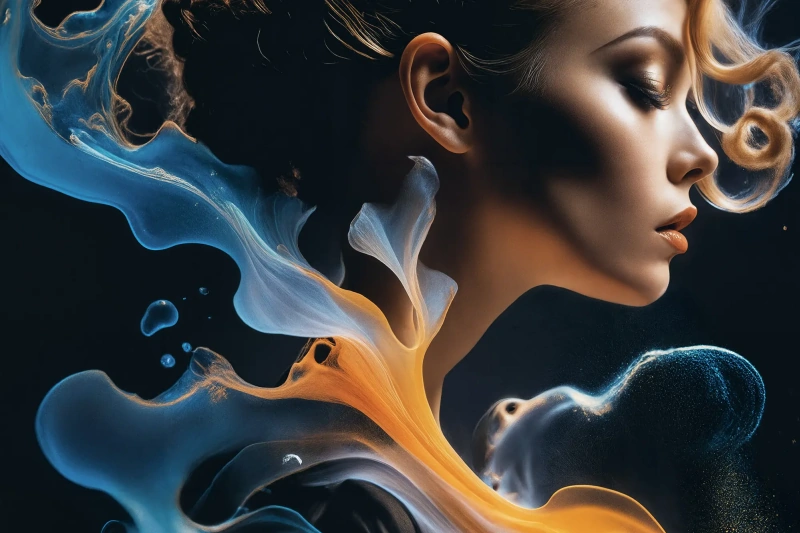The book "Keeping an eye open" by Julian Barnes is the collection of essays on art written for the Modern Painters magazine, The Guardian newspaper and some other British periodicals. This book is not intended to be a comprehensive art history or a representative collection about the central art figures of the XIX—XX centuries. The name given for the book by the Danish publishing house Tiderne Skifter was much closer to its format. The book was called How I see it.
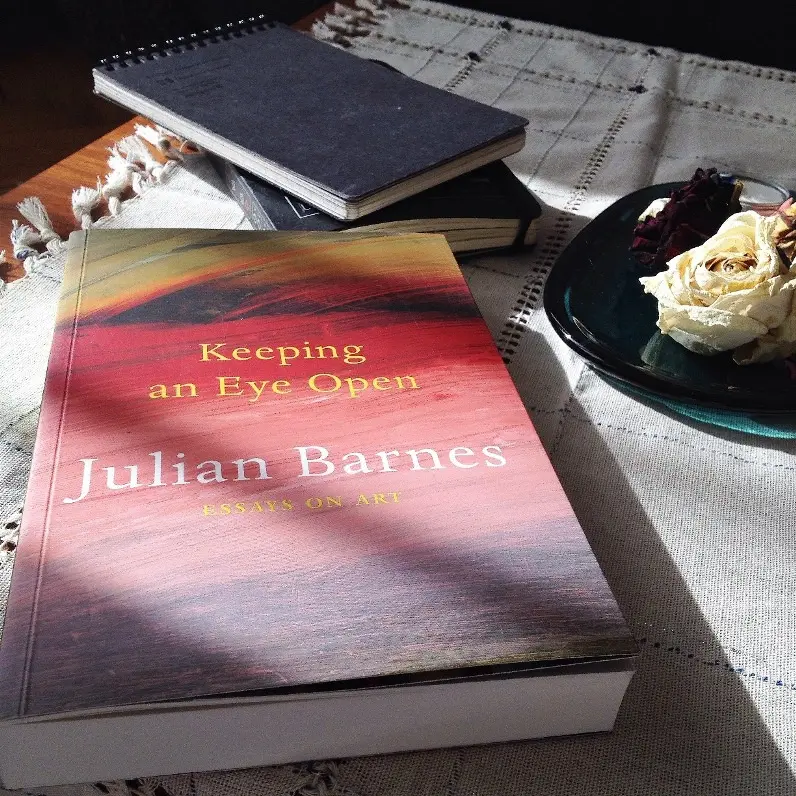
About the Author
Julian Barnes is an English writer, literary critic and translator. He studied Western European languages at Oxford and had a hand in compiling the Oxford English Dictionary. Barnes received a prestigious award for each new novel and for the literary activity in general. He is considered to be a cult modern classic author and chameleon novelist, as each his new book differs from the previous one. Barnes breaks the established literary genres, switches usual bonds in cozy and predictable novel forms and presents them in a new way. Barnes has a special superpower: to speak about difficult things in simple words and to build them up in such an order that the place, time, cultural context and living vibration come out of them. He was shortlisted for Booker Prize three times and finally in 2011, he received it for his novel The Sense of an Ending. In 2017, two of his books were published in Russian: a fictional biography of Dmitri Shostakovich and the collection of essays on art Keeping an Eye Open.

Photo: www.newyorker.com
To retell the book by Julian Barnes in 5 minutes is like to retell a haiku in your own words. The writer with the unofficial status of the main European intellectual uses words rather tightly and clearly. But the spaces between words are always wider than the words.
The Accidental Story of Art
The main reason for choosing Delacroix, Bonnard and Magritte for the conversation about art was primarily a journalistic assignment Barnes received from the editor. Whether a new biography of Cezanne was published or a new curatorial exhibition of Edouard Manet opened, Barnes was always asked for his opinion. All these notes, collected together, constitute an exhaustive story about the way of art (mostly French) from the romanticism to realism, passing to impressionism and further to abstraction.The whole cycle of journalistic essays is placed in the centre of the book, but it opens and closes with two multi-format and multi-genre chapters. The first one is about Théodore Géricault, it is a chapter from the novel A History of the World in 101/2 Chapters by Barnes, and the last one is a memoir or even a journey diary teling about the painter Howard Hodgkin. The first is a literary fantasy, although with a solid documentary basis, the last is the story of the personal acquaintance, conversations, and mutual travel described almost in real time. Chronologically correct way of the book from the past to the present is a journey from the literature to the reality. And from the works to the biography of the author.
This is also the way from Barnes the writer to Barnes the Man-with-Biography. And that’s a valid excuse to search in the book what is near and dear to the writer, what Julian Barnes likes and dislikes. The book about art instead of a long interview.
This is also the way from Barnes the writer to Barnes the Man-with-Biography. And that’s a valid excuse to search in the book what is near and dear to the writer, what Julian Barnes likes and dislikes. The book about art instead of a long interview.
The artist's Studio
1855, 361×598 cm
The Non-Accidental Biography
The author raises the question about the knowledge of the artist’s biography while understanding his paintings from time to time. The Flaubert’s respond "I have no biography" to the question about his personal life, he continues it with Lucian Freud’s quote, "any words that might come out of his mouth concerning his art would be as relevant to that art as the noise of a tennis player produces when playing a shot." How would we perceive the lithography and painting by Félix Vallotton's if we were unaware of the story about his wedding? How would we change our perception of intimate works by Bonnard knowing the fact, that he continued to paint his wife in the bath even after 5 years of her death? But on the other hand, what is more fair: the speculations about Degas by his contemporaries that he must be impotent and misogynist, or his paintings that clearly say otherwise? And is it important to know that Redon was happily married and adored his wife, while his paintings seem to be mysterious hallucinogenic visionary?"Courbet failed to impress "a village sweetie-pie" and never married; Delacroix imagined marrying a woman equal, if not superior to him, but quickly gave up the search, Manet was married, but a serious chaser (and catcher) of the women. Do we imagine they would have painted differently had their statuses been reversed? It is unverifiable; also unfalsifiable", wrote Barnes.
From a set of randomly ordered essays, Barnes compiled, if not his biography, the story about his own view on art and personality. When you reach the chapter "Dedication", you will definitely know more about the art and somehow about Barnes himself. He says that, "One of the very best shows I’ve seen in the last thirty years", "a painting that instantly entered my top ten and has remained there ever since." Will you start to understand the novels by Barnes better if you find out which modern artist was his friend and which art biographer he considers the best? Let’s try.
The Exhibition
The execution of Emperor Maximilian I
1868, 252×305 cm
The best exhibition in 30 years Barnes visited took place in the National Gallery in London. It occupied six rooms but was all about one picture: Manet’s The Execution of Emperor Maximilian. Three versions of the Manet’s painting occupied one room: the versions from Boston, Mannheim, and the pieces of the cut canvas (salvaged by Degas after Manet’s death, now they are in the National Gallery’s own collection). They were placed not side by side, but in a circle, you had to turn your body to make the comparison and to feel the difference physically. The other exhibits: photographs of the main participants, Mexican scenes and personalities, topical lithographs, documents, sketches.
It was a contextual exhibition, an exhibition to guess, but not a curatorial explanation. Manet did not leave any hints to neither curators, nor the audience. Only three full-fledged variants of the same story. There were no signs of studying the historical event in his personal things, no memories of friends about working on the picture, no mentions in the letters.
18 years later, Barnes would visit a large-scale exhibition of Manet, where there would be 186 exhibits, properly collected in themed rooms. A lot of masterpieces and a lot of bad work. But he wrote about the feet of the firing squad soldiers of Emperor Maximilian more than about any of the pictures from this big show.
It was a contextual exhibition, an exhibition to guess, but not a curatorial explanation. Manet did not leave any hints to neither curators, nor the audience. Only three full-fledged variants of the same story. There were no signs of studying the historical event in his personal things, no memories of friends about working on the picture, no mentions in the letters.
18 years later, Barnes would visit a large-scale exhibition of Manet, where there would be 186 exhibits, properly collected in themed rooms. A lot of masterpieces and a lot of bad work. But he wrote about the feet of the firing squad soldiers of Emperor Maximilian more than about any of the pictures from this big show.
The Artist

Photo: Georges Braque at the hotel "Rome", 1911. Source: www.modernnow.com
The book reviewer of The New York Times newspaper Deborah Solomon, wryly noted that Barnes wrote about Georges Braque as if he recommended him for the Nobel prize. In art tandem of Picasso & Braque, Barnes admires Braque and respects Braque. First of all, Braque the Man. Silent, purposeful, unwavering, Braque was like a "hilltop castle": by his impeccable moral status, by his very existence, he made the everyday passions of public geniuses small and petty. He lived with one woman for 50 years and did not make the young assistant his mistress; in his youth, he taught Picasso to grind paint and make collages, and after the break, he refused to resume communication. He remained in his cold workshop during the Second World War and he politely refused from coal, offered by the occupiers. He would not go along with a group of famous artists to Germany at the invitation of the Germans, he would not condemn publicly anyone who had gone there, but would stop communicating with them.
Julian Barnes collected household stuff and tiny replicas of Braque, admiring the lack of gossip and brevity of his life. It was not holiness, but commitment to principles, the ability to follow the necessary things and avoid the needless. Until the very moment of death.
Julian Barnes collected household stuff and tiny replicas of Braque, admiring the lack of gossip and brevity of his life. It was not holiness, but commitment to principles, the ability to follow the necessary things and avoid the needless. Until the very moment of death.
The Painting
Woman Sweeping
1900, 44.1×47.3 cm
In the personal top ten paintings by Julian Barnes, there are about a hundred items. And many heroes of his essays have settled in it forever — fortunately, the size of the ten is limitless and he doesn’t have to exclude somebody, having gone through a new experience. Bonnard, and Vallotton, and Degas, and Courbet are all here. It is known precisely how and why the painting by Édouard Vuillard found itself in this top list.
"It was a deeply wise painting", wrote Barnes. "An autumnal, perhaps valedictory tenderness; the celebration of an ordinary, domestic, democratic moment, yet one filled with more understanding than many a mighty piece of public art." Knowing the artist’s life experience equal to the maturity of his painting, the author was surprised to discover that it had been written by the 23-year-old Vuillard. But he used to believe his eyes: obviously, the artist just got the necessary experience much earlier than the others.
"It was a deeply wise painting", wrote Barnes. "An autumnal, perhaps valedictory tenderness; the celebration of an ordinary, domestic, democratic moment, yet one filled with more understanding than many a mighty piece of public art." Knowing the artist’s life experience equal to the maturity of his painting, the author was surprised to discover that it had been written by the 23-year-old Vuillard. But he used to believe his eyes: obviously, the artist just got the necessary experience much earlier than the others.
The Art Critic

Photo: David Sylvester, 1979, photographed by Derry Moore. Source: www.npg.org.uk
At the very beginning of the conversation about Rene Magritte, Barnes announced that he was lucky with the biographer. David Sylvester knew the artist personally and he compiled a comprehensive catalog of his works and wrote about Magritte for 40 years. Sylvester was cautious and did not like theories, he knew everything about the life of Magritte and many things he saw himself. But at the same time, he avoids excessive confidence. Barnes is mesmerized by one humble Sylvester‘s habit, which characterizes his way of thinking and his temperament: he put the word probably before each personal note. That is absolutely before each one. Barnes the Writer counted: sometimes, there were 6 probably words in one section.
With the same exceptional sensitivity, Sylvester hangs Magritte’s paintings at exhibitions, transforming "a ridiculous and boring interior of Hayward’s" into a magnificent background: gloomy concrete walls, strange corridors, narrow alleys and inappropriate ladders were transformed into a humongous resemblance of Magritte’s brain". He also found irreproachable art bonds of Magritte’s subjects with not only stories from the artist’s life, but also the plots from the history of the world and civilization.
"Is it possible to be young and not to love Magritte?", Barnes admired witty art of the Belgian. However, he himself was not so young and loved the writer David Sylvester. Probably, even more than the artist, about whom Sylvester wrote.
With the same exceptional sensitivity, Sylvester hangs Magritte’s paintings at exhibitions, transforming "a ridiculous and boring interior of Hayward’s" into a magnificent background: gloomy concrete walls, strange corridors, narrow alleys and inappropriate ladders were transformed into a humongous resemblance of Magritte’s brain". He also found irreproachable art bonds of Magritte’s subjects with not only stories from the artist’s life, but also the plots from the history of the world and civilization.
"Is it possible to be young and not to love Magritte?", Barnes admired witty art of the Belgian. However, he himself was not so young and loved the writer David Sylvester. Probably, even more than the artist, about whom Sylvester wrote.
Author: Anna Sidelnikova






